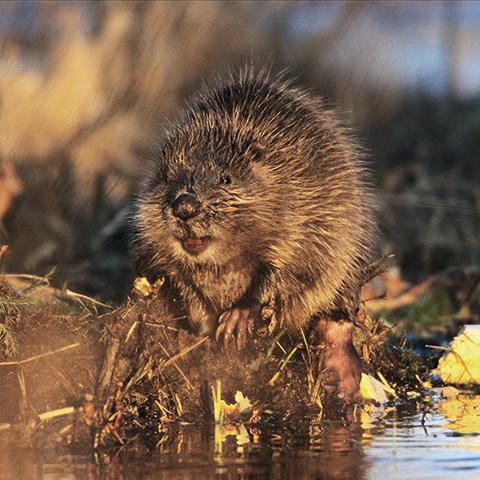Contact
Department of Wildlife, Fish and Environmental Studies

At five locations in Västerbotten, SLU researchers are building artificial beaver dams. The purpose is to, under controlled conditions, increase knowledge about the effects of beaver dams on the environment, biological diversity and human health. The project will start in autumn 2023 and is expected to last for four years.
From being extinct in Sweden 100 years ago, there are now around 120,000 beavers in the country. Their characteristic gnawing on trees adjacent to watercourses and ponds has become an increasingly common sight in the landscape - and where beavers are found, they affect their immediate environment in many different ways.
- The beaver creates environments that are important for many other species. By building dams, they create wetlands and dead wood both on land and in water, which is important for biodiversity. The dams can also increase the landscape's resilience to climate change. By raising the groundwater level, they counteract droughts, and by keeping the water higher in catchment areas during heavy rainfall and high flows, they counteract downstream floods. When the beaver abandons a location, the entire landscape changes again, says Frauke Ecke, who is a researcher at SLU and is responsible for the beaver project.
Beaver dams have many effects are the happen not only where the beaver lives, but also upstream and downstream of the dam itself.
- We are interested in studying in controlled ways and in detail, what the environment looks like before a beaver dam is built, during the time it exists – and what happens when it is abandoned or collapses. That is why we build artificial beaver dams, says Frauke Ecke.
 Artificial beaver pond. Photo: Craig King
Artificial beaver pond. Photo: Craig King
In connection with the dams, as well as both upstream and downstream, the researchers will measure the presence of different species of mammals and insects. Water chemistry and the presence of potential infectious agents in the water will also be investigated. In addition to the artificial dams, the researchers are carrying out similar studies in nine real beaver dams in different parts of the country.
- We have several questions that we hope to answer, for example in what ways the beaver dams may increase the landscape's resistance to climate change, and in what ways they may contribute to increased biological diversity (bats for example), says Frauke Ecke.
Other interesting questions are whether the dams increase concentrations of methylmercury or leakage of nutrients and how long such effects last. In addition, do the ponds affect the risk of the occurrence of infectious diseases such as tularaemia or the presence of mosquitoes?
- Here, the experimental set-up makes it possible to distinguish between effects caused by beavers and the beaver as a host animal for infectious agents, for example tularaemia. We do not have beavers in the artificial ponds, so if we found infectious agents there, that would be evidence that the presence of these infectious agents is benefited by the environments that the beaver creates, and not by the presence of the beavers themselves, says Frauke Ecke.
The project is part of the EU projects Horizon 2020: MERLIN and Horizon Europe: BEPREP and runs until 2027.